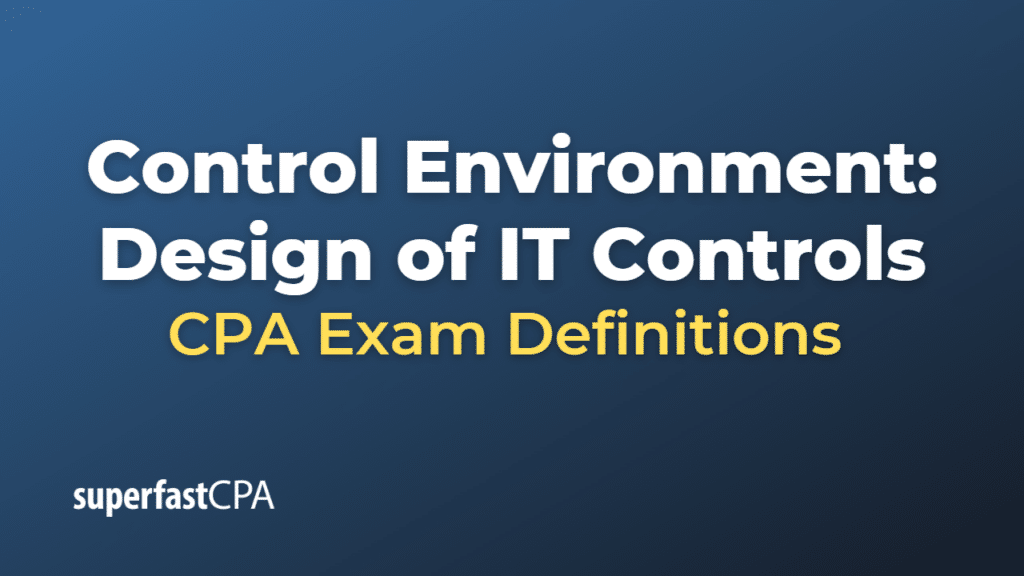Control Environment: Design of IT Controls
The design of IT controls in an entity’s control environment encompasses various elements that help ensure the proper functioning, security, and compliance of the organization’s information systems. These elements can be broadly classified into three categories: preventive, detective, and corrective controls. Within these categories, several key components are crucial to the effective design of IT controls:
- Risk assessment: Identifying and assessing the risks associated with IT systems, applications, and infrastructure. This process helps organizations prioritize their efforts and resources to implement the most effective controls.
- Policies and procedures: Establishing clear and comprehensive policies and procedures to guide the design, implementation, and maintenance of IT controls. These should be based on industry best practices, regulatory requirements, and the organization’s risk appetite.
- Preventive controls: Controls that are designed to prevent incidents or errors from occurring. Examples include access controls, encryption, firewalls, and antivirus software.
- Detective controls: Controls that identify and monitor for potential threats, vulnerabilities, and incidents. Examples include intrusion detection systems, log analysis, and security incident and event management (SIEM) systems.
- Corrective controls: Controls that respond to incidents and vulnerabilities by mitigating their impact and restoring systems to normal operations. Examples include incident response plans, disaster recovery plans, and backup and restore procedures.
- Segregation of duties: Ensuring that no single individual has complete control over critical IT processes, reducing the likelihood of fraud or errors going undetected.
- Training and awareness: Providing ongoing training and awareness programs to educate employees on IT security, compliance requirements, and their role in maintaining a secure environment.
- Monitoring and testing: Regularly reviewing and testing the effectiveness of IT controls, identifying gaps and areas for improvement, and adjusting controls as necessary.
- Change management: Ensuring that changes to IT systems and infrastructure are properly authorized, documented, tested, and approved before implementation, minimizing the risk of introducing new vulnerabilities or disrupting operations.
- Compliance and audit: Establishing processes to ensure adherence to applicable laws, regulations, and industry standards, and to facilitate audits by internal and external parties.
A well-designed IT control environment should address all these elements, resulting in a comprehensive and integrated approach to managing and mitigating IT risks.













